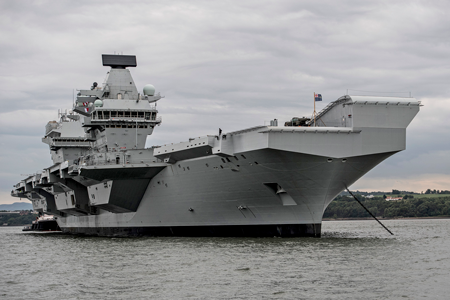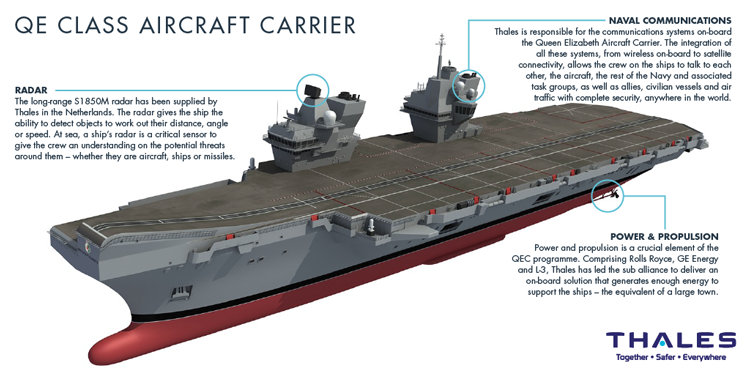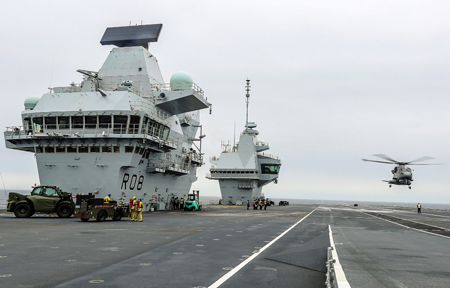British aircraft carrier HMS Queen Elizabeth begins 50 years of service

At 280 metres long and with four-acre flight decks, the ships are not only the largest and most powerful warships in UK history but also rank amongst the world’s most capable aircraft carriers. And they are going to be with us for the next 50 years.
In a world of intensifying global threats, we will all rely on HMS Queen Elizabeth and her sister ship, HMS Prince of Wales, to protect our national and international interests. But while we are all relying on the Royal Navy, the Royal Navy is relying on Thales. That’s nothing new. Thales has been supporting the Royal Navy for 100 years. The ever-deepening relationship can be traced right the way back to 1917, when we began equipping the navy’s submarines with periscopes.
Today, almost every single submarine and surface ship in the fleet uses various combinations of our sonar, radar, communications, electro-optical systems and electronic warfare technology.
What was truly revolutionary was the sheer scale of the project, delivered through a unique partnering relationship between Thales, BAE Systems, Babcock and the UK Ministry of Defence, in an enterprise known as the Aircraft Carrier Alliance.
All hands on deck
As a founding member of the Aircraft Carrier Alliance, Thales has been deeply involved in the provision of the radar, communications, power and propulsion systems right from the start.
Competitive instincts were put aside and everyone worked in the best interests of the project; in the best interests of the Royal Navy and of the United Kingdom.
At its peak, the programme directly employed 8,000 people across six sites and a further 3,000 across the supply chain. Working together, members of the Alliance embraced a collective culture of trust, collaboration, innovation and mutual support.

Capability through collaboration
Close collaboration and a spirit of teamwork within the Aircraft Carrier Alliance created a solid foundation for equipping the new carriers with world-class capabilities. Thales and BAE Systems, for example, delivered the long-range S1850M radar, which can track up to 1,000 air targets simultaneously, at a range of around 400 kilometres.
Another radar system, is capable of detecting objects as small as a tennis ball, travelling at three times the speed of sound more than 25 Km away.
A fully integrated communications system provided by Thales is providing everything from on-board WiFi to satellite connectivity, as well as internal ship-wide communications, plus ship-to-ship, ship-to-air and ship-to-shore comms with complete security.

For power, Thales led a sub-alliance to deliver engines, generators and a distribution network which can generate 110 MW of electrical power - enough for a large town.
Both ships are driven by Rolls-Royce MT30 gas turbines, the most powerful in- service systems in the world. These drive two giant propellers, each weighing 33 tonnes, which can propel the 65,000 tonne carriers at speeds in excess of 25 knots.
The ships will also be protected by Merlin helicopters, one type fitted with the Thales Cerberus mission system and Searchwater radar for airborne early warning and the other with Thales FLASH dipping sonar for detecting enemy submarines.
Sea, air and land. Whatever it takes.
The Queen Elizabeth Class carriers will be used by all three sectors of the UK Armed Forces and are versatile enough to be used for operations ranging from deterrence and conflict, to humanitarian aid and disaster relief, to international influence and diplomacy.
Building her was an enormous achievement which epitomises an ethos of teamwork and a commitment to do ‘whatever it takes’ – a mirror to the values instilled in our armed forces.
HMS Queen Elizabeth, we salute you.